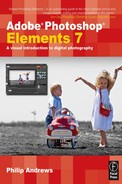A >>
Aliasing The jaggy edges that appear in bitmap images with curves or lines at any angle other than multiples of 90°. The Anti-aliasing function in Elements softens around the edges of images to help make the problem less noticeable. See Figure A.1.

Figure A.1 Aliasing is most noticeable on the edges of text and objects with diagonal or curving edges.
Aspect ratio This is usually found in dialog boxes concerned with changes of image size and refers to the relationship between the width and height of a picture. The maintaining of an image’s aspect ratio means that this relationship will remain the same even when the image is enlarged or reduced. See Figure A.2.
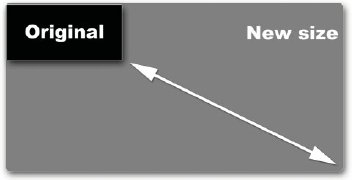
Figure A.2 Maintaining the aspect ratio of your photograph when you enlarge or reduce sizes will help guarantee that all your picture elements remain inproportion.
B >>
Background printing A printing method that allows the user to continue working whilst an image or document is being printed.
Batch processing or Process Multiple Files as it is known in Elements 6 and 7. Refers to a function or a series of commands being applied to several files at one time. This function is useful for making the same changes to a folder full of images. In Elements this function is found under the File menu and is useful for converting groups of image files from one format to another.
Bit Stands for ‘binary digit’ and refers to the smallest part of information that makes up a digital file. It has a value of only 0 or 1. Eight of these bits make up one byte of data.
Bitmap or ‘raster’ The form in which digital photographs are stored which is made up of a matrix of pixels. Many people confuse this term with Bitmap mode, which refers to a pure black and white picture that contains no colors or gray tones.
Blend mode The way in which a color or a layer interacts with others below it. The most important after Normal are probably Multiply, which darkens everything, Screen, which adds to the colors to make everything lighter, Lighten, which lightens only colors darker than itself, and Darken, which darkens only colors lighter than itself. Both the latter therefore flatten contrast. Color maintains the shading of a color but alters the color to itself. Glows therefore are achieved using Screen mode, and Shadows using Multiply.
Brightness range The range of brightnesses between shadow and highlight areas of an image.
Burn tool Used to darken an image; can be targeted to affect just the shadows, midtones or highlights. Opposite to Dodge. Part of the toning trio, that also includes the Sponge.
Byte This is the standard unit of digital storage. One byte is made up of 8 bits and can have any value between 0 and 255. 1024 bytes are equal to 1 kilobyte. 1024 kilobytes are equal to 1 megabyte. 1024 megabytes are equal to 1 gigabyte.
C >>
CCD or Charge Coupled Device Many of these devices placed in a grid format comprise the sensor of most modern digital cameras. See Figure A.3.
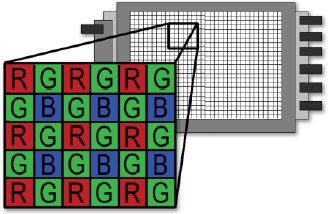
Figure A.3 The CCD sensor is the digital equivalent of film and is used to record the photograph.
Clone Stamp or Rubber Stamp tool Allows a user to copy a part of an image to somewhere else. It is therefore ideal for repair work, e.g. unwanted spots or blemishes. Equivalent to Copy and Paste in a brush.
Color mode The way that an image represents the colors that it contains. Different color modes include Bitmap, RGB and Grayscale.
Compression A process where digital files are made smaller to save on storage space or transmission time. Compression is available in two types – lossy, where parts of the original image are lost at the compression stage, and lossless, where the integrity of the file is maintained during the compression process. JPEG and GIF use lossy compression whereas TIFF is a lossless format.
D >>
Digitize This is the process by which analog images or signals are sampled and changed into digital form.
Dodge tool Used for lightening areas in an image. See also Burn tool.
DPI or Dots per inch A term used to indicate the resolution of a printed photo. PPI or Pixels Per Inch refers to the resolution of a digital picture. Generally, the higher the DPI or PPI the better quality the photo. See Figure A.4.
Dynamic range The measure of the range of brightness levels that can be recorded by a sensor.
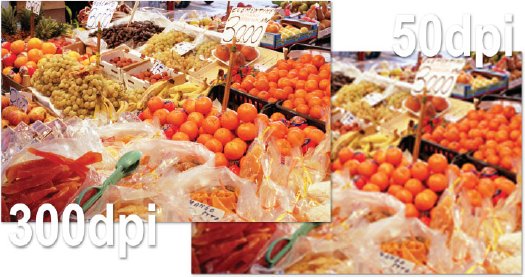
Figure A.4 The dpi or dots per inch term is used as a measurement of the resolution of a printed picture. The higher the dpi value the higher the image’s resolution will be.
E >>
Enhancement A term that refers to changes in brightness, color and contrast which are designed to improve the overall look of an image.
F >>
File format The way that a digital image is stored. Different formats have different characteristics. Some are cross-platform, others have inbuilt compression capabilities.
Filter In digital terms a filter is a way of applying a set of image characteristics to the whole or part of an image. Most image-editing programs contain a range of filters that can be used for creating special effects.
Front page Sometimes called the home or index page, refers to the initial screen that the viewer sees when logging on to a website. Often the name and spelling of this page file are critical if it is to work on the web server. Consult your ISP staff for the precise name to be used with your site.
G >>
Gamma The contrast of the midtone areas of a digital image.
Gamut The range of colors or hues that can be printed or displayed by particular devices.
Gaussian Blur When applied to an image or a selection this filter softens or blurs the image.
GIF or Graphic Interchange Format An indexed color mode that contains a maximum of 256 colors that can be mapped to any palette of actual colors. It is extensively used for web graphics, buttons and logos, and small animated images.
Grayscale A monochrome image containing just monochrome tones ranging from white through a range of grays to black.
H >>
Histogram A graph that represents the tonal distribution of pixels within a digital image. From version 3.0 of Elements the histogram is located under the Windows menu. See Figure A.5.
History Adobe’s form of Multiple Undo.

Figure A.5 The histogram is a visual representation of the pixels that make up your digital photograph.
Hot linked A piece of text, graphic or picture that has been designed to act as a button on a web page. When the viewer clicks the hot linked item they are usually transported to another page or part of a website.
HTML The Hyper Text Mark Up Language is the code used to create web pages. The characteristics of pages are stored in this language and when a page file is downloaded to your computer the machine lays out and displays the text, image and graphics according to what is stated in the HTML file.
Hue Refers to the color of the light and is separate from how light or dark it is.
I >>
Image layers Images in Elements can be made up of many layers. Each layer will contain part of the picture. When viewed together all layers appear to make up a single continuous image. Special effects and filters can be applied to layers individually. See Figure A.6.
Interpolation This is the process used by image-editing programs to increase the resolution of a digital image. Using fuzzy logic the program makes up the extra pixels that are placed between the original ones that were generated at the time of scanning.
ISP The Internet Service Provider is the company that hosts or stores web pages. If you access the web via a dial-up account then you will usually have a portion of free space allocated for use for your own site; others can obtain free (with a small banner advert attached) space from companies like www.tripod.com.
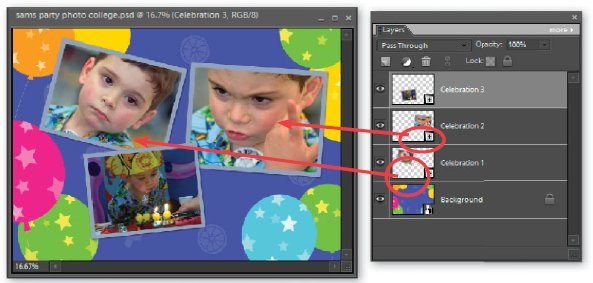
Figure A.6 Layers help keep different parts of a complex image separate. This makes editing and enhancement steps easier.
JPEG A file format designed by the Joint Photographic Experts Group that has inbuilt lossy compression that enables a massive reduction in file sizes for digital images. Used extensively on the web and by press professionals for transmitting images back to newsdesks worldwide. See Figure A.7.

Figure A.7 Comparing the lossless compression of a TIFF file with the lossy compression version found in th JPEG file format.
L >>
Layer opacity The opacity or transparency of each layer can be changed independently. Depending on the level of opacity the parts of the layer beneath will become visible. You can change the opacity of each layer by moving the Opacity slider in the Layers palette.
LCD or Liquid Crystal Display A display screen type used in preview screens on the back of digital cameras, in laptop computers and more and more as replacement desktop screens.
Liquify A tool that uses brushes to perform distortions upon selections or the whole of an image.
M >>
Marquee A rectangular selection made by clicking and dragging to an opposite corner.
Megapixel One million pixels. Used to describe the resolution of digital camera sensors.
N >>
Navigator In Elements, a small scalable palette showing the entire image with the possibility of displaying a box representing the current image window frame. The frame’s color can be altered; a new frame can be drawn (scaling the image window with it) by holding the Command/Ctrl keys and making a new marquee. The frame can be dragged around the entire image with the Hand tool. The Zoom tools (mountain icons) can be clicked, the slider can be dragged, or a figure can be entered as a percentage.
Optical resolution The resolution that a scanner uses to sample the original image. This is often different from the highest resolution quoted for the scanner as this is scaled up by interpolating the optically scanned file.
Options bar Long bar beneath the menu bar, which immediately displays the various settings for whichever tool is currently selected.
P >>
Palette A window that is used for the alteration of image characteristics: Properties palette, Layers palette, Styles palette, Hints palette, file browser, History, etc. These can be docked together vertically around the main image window or if used less frequently can be docked in the Palette Bin to the right of the main workspace or in the Palette Well (for earlier versions of Elements) at the top right of the screen (dark gray area).
Pixel Short for ‘picture element’, refers to the smallest image part of a digital photograph.
Process Multiple Files see Batch processing.
R >>
RGB All colors in the image are made up of a mixture of Red, Green and Blue colors. This is the typical mode used for desktop scanners, painting programs and digital cameras.
S >>
Sponge tool Used for saturating or desaturating part of an image that is exaggerating or lessening the color component as opposed to the lightness or darkness.
Status bar Attached to the base of the window (Mac) or beneath the window (PC). Can be altered to display a series of items from Scratch Disk usage and file size to the time it took to carry out the last action or the name of the current tool.
Stock A printing term referring to the type of paper or card that the image or text is to be printed on.
Swatches In Elements, refers to a palette that can display and store specific individual colors for immediate or repeated use.
Thumbnail A low-resolution preview version of larger image files used to check before opening the full version.
TIFF or Tagged Image File Format A file format that is widely used by imaging professionals. The format can be used across both Macintosh and PC platforms and has a lossless compression system built in.
W >>
Warp Text feature A means of creating differing distortions to pieces of text such as arcs and flag ripples.
General >>
| Action | Windows (ver. 7.0) | Macintosh (ver. 6.0) |
| Open a file | Ctrl + O | Command + O |
| Open file browser | – | Shift + Command + O |
| Close a file | Ctrl + W | Command + W |
| Save a file | Ctrl + S | Command + S |
| Step backward | Ctrl + Z | Command + Z |
| Step forward | Ctrl + Y | Command + Y |
| Free Transform | Ctrl + T | Command + T |
| Auto levels | Shift + Ctrl + L | Shift + Command + L |
| Auto contrast | Alt + Shift + Ctrl + L | Option + Shift + Command + L |
| Auto Color Correction | Shift + Ctrl + B | Shift + Command + B |
| Convert to Black and White | Alt + Ctrl + B | Option + Command B |
| Hue/Saturation | Ctrl + U | Command + U |
| Levels | Ctrl + L | Command + L |
| Select All | Ctrl + A | Command + A |
| Apply last filter | Ctrl + F | Command + F |
| Show/Hide rulers | Shft + Ctrl + R | Command + R |
| Show/Hide selection | Ctrl + H | Command + H |
| Help | F1 | Command + ? |
| Print Preview | Ctrl + P | Command + P |
| Exit Elements | Ctrl + Q | Command + Q |
| Deselect | Ctrl + D | Command + D |
| Feather a selection | Alt + Ctrl + D | Option + Command + D |
| Action | Windows | Macintosh |
| Fit image on screen | Ctrl + 0 | Command + 0 |
| 100% magnification | Alt + Ctrl + 0 | Option + Command + 0 |
| Zoom in | Ctrl + + | Command + + |
| Zoom out | Ctrl + - | Command + - |
| Scroll image with Hand tool | Spacebar + drag mouse pointer | Spacebar + drag mouse pointer |
| Scroll up or down 1 screen | Page Up or Page Down | Page Up or Page Down |
Selection/Drawing tools >>
| Action | Windows | Macintosh |
| Add to an existing selection | Shift + Selection tool | Shift + Selection tool |
| Subtract from an existing selection | Alt + Selection tool | Command + Selection tool |
| Constrain Marquee to square or circle | Shift + drag Selection tool | Shift + drag Selection tool |
| Draw Marquee from center | Alt + drag Selection tool | Option + drag Selection tool |
| Constrain Shape tool to square or circle | Shift + drag Shape tool | Shift + drag Shape tool |
| Draw Shape tool from center | Alt + drag Shape tool | Option + drag Shape tool |
| Exit Cropping tool | Esc | Esc |
| Enter Cropping tool selection | Enter | Return |
| Switch Magnetic Lasso to Lasso | Alt + drag tool | Option + drag tool |
| Switch Magnetic Lasso to Polygonal Lasso | Alt + drag tool | Option + drag tool |
| Switch from Selection to Move tool | Ctrl (except if Hand tool is selected) | Command |
| Action | Windows | Macintosh |
| Change to Eyedropper | Alt + painting or Shape tool | Option + painting or Shape tool |
| Cycle through blending modes | Shift + + or - | Shift + + or - |
| Set exposure or opacity for painting | Painting tool + Number key ( %= number key × 10) | Painting tool + Number key ( %= number key × 10) |
| Display Fill dialog box | Shift + Backspace | Shift + Delete |
| Perform Fill with background color | Ctrl + Backspace | Command + Delete |
| Change Brush tip size | [ to decrease size ] to increase size |
[ to decrease size ] to increase size |
| Change Brush tip hardness | Shift + [ to decrease hardness Shift + ] to increase hardness |
Shift + [ to decrease hardness Shift + ] to increase hardness |
Type editing >>
| Action | Windows | Macintosh |
| Select word | Double-click | Double-click |
| Select line | Triple-click | Triple-click |
| Decrease font size by 2 points/pixels | Selected text + Shift + < | Selected text + Shift + < |
| Increase font size by 2 points/pixels | Selected text + Shift + > | Selected text + Shift + > |
Elements/Photoshop feature equivalents
| Activity | Elements | Photoshop |
| Lighten shadow areas in an image | Fill Flash feature (ver. 1.0/2.0), Shadows/Highlights (ver. 3.0-7.0) Adjust Color Curves (ver. 5.0-7.0) |
Curves and Shadow/Highlight feature |
| Darken highlight areas in an image | Backlighting feature (ver. 1.0/2.0), Shadows/Highlights (ver. 3.0-7.0) Adjust Color Curves (ver. 5.0-7.0) |
Curves and Shadow/Highlight feature |
| Transformation | Image > Transform | Edit > Transform |
| Rotate layer | Image > Rotate > Layer 90° left | Edit > Transform > Rotate 90° CCW |
| Rotate canvas | Image > Rotate > 90° left | Image > Rotate Canvas > 90° CW |
| Resize image | Image > Resize > Image Size | Image > Image Size |
| Resize canvas | Image > Resize > Canvas Size | Image > Canvas Size |
| Batch dialog | File > Batch Processing or File > Process Multiple Files |
File > Automate > Batch |
| Web Photo Gallery | File > Create Web Photo Gallery or Create>HTML Photo Gallery |
File > Automate > Web Photo Gallery |
| Contact Sheet | File > Print Layouts > Contact Sheet or File > Process Multiple Files |
File > Automate > Contact Sheet II |
| Picture Package | File > Print Layouts > Picture Package or File > Process multiple Files | File > Automate > Picture Package |
| Auto Levels | Enhance > Auto Levels | Image > Adjustments > Auto Levels |
| Auto Contrast | Enhance > Auto Contrast | Image > Adjustments > Auto Contrast |
| Auto Color Correction | Enhance > Auto Color Correction | Image > Adjustments > Auto Color |
| Hue/Saturation | Enhance > Adjust Color > Hue/Saturation | Image > Adjustments > Hue/Saturation |
| Color Variations | Enhance > Adjust Color > Color Variations | Image > Adjustments > Variations |
| Brightness/Contrast | Enhance > Adjust Brightness/Contrast > Brightness/Contrast | Image > Adjustment > Brightness/Contrast |
| Levels | Enhance > Adjust Brightness/Contrast > Levels | Image > Adjustments > Levels |
